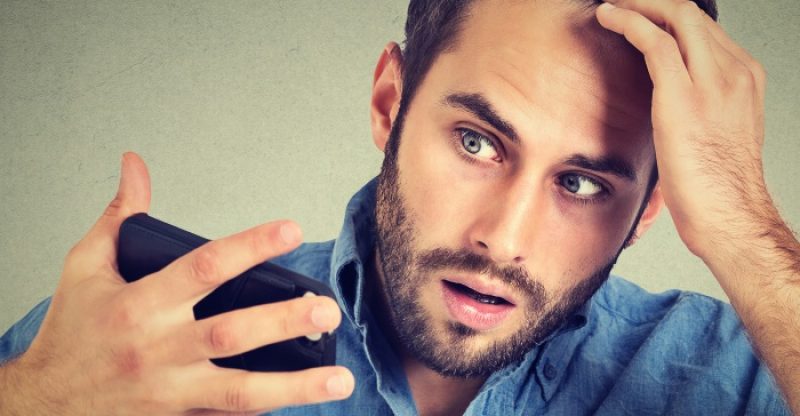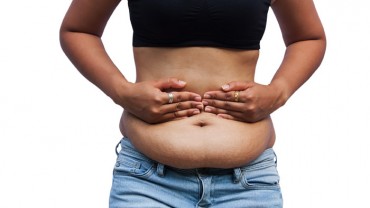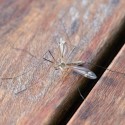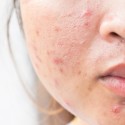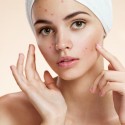Best Hair Loss Treatments and Natural Remedies
If you have started to notice less hair on your scalp, more hair in your brush each day, or clumps of hair on your pillow in the morning, it may be time to do something about your hair loss.
Having a full head of hair is important to many people, regardless of their gender, and hair loss is a problem for many in today’s world.
As many as four in every ten Americans suffer currently from some hair loss, so finding safe, natural solutions to promote hair growth is a priority for many of us (1).
While hair loss is often associated with male pattern baldness, women’s hair loss is also a growing problem.
Losing up to 100 hairs a day is considered normal, and your body’s way of reproducing new hair.
Losing more than that consistently can result in noticeably thinner hair or bald spots on your head.
If you are noticing thinning hair or bald patches on your scalp, you should investigate the causes of your hair loss, and treatments that can help promote regrowth.
While topical hair loss products and hair replacement surgery are some of the most well-known treatments, other, more natural remedies are useful, as well.
Finding out the cause of your hair loss will be critical to identifying the most effective solutions.
Our guide will explore all the reasons for hair loss, and explore natural ways to stop it and hopefully regrow your hair.
Understanding the Causes of Hair Loss
While many conditions can contribute to hair loss, the most common causes are your genetics, changes in your hormones, a medical condition, or medications you may be taking (2).
Doctors refer to hair loss as alopecia, and there are two main types of this disorder.
The first is called androgenetic alopecia, and as you can probably tell from the name, it is the inherited type commonly referred to as male or female pattern baldness.
It starts with thinning hair that gradually worsens until almost all the hair is gone (3).
Androgenetic alopecia worsens with age.
The second type is called alopecia areata, which begins with small patches of baldness that can spread and grow together.
Alopecia areata occurs because the immune system mistakenly attacks hair follicles, causing them to fall out (4).
This disorder can result in hair loss all over the body, not just the head.
There is no known cause for alopecia areata.
Hormones play a significant role in the production of hair for both men and women.
Hormones control where and how hair grows on your body, including hair patterns on your scalp.
If you have hormonal imbalances or changes, you may see this manifested in your hair growth.
Common causes of hormone imbalance include pregnancy, thyroid disorders, polycystic ovary syndrome (PCOS), and menopause.
Hair growth or loss impacted by hormone changes is usually temporary and will return to normal once the imbalance is corrected.
The hormones that control hair loss include testosterone, androstenedione, and dihydrotestosterone (DHT).
These hormones are known as androgens, and everyone has all three androgens in their bodies.
Imbalance of any one or more of these hormones can cause loss of hair in men and women.
Another temporary period of hair loss for women is known as telogen effluvium.
The most common occurrence of this is a few months after pregnancy.
During pregnancy, your hair follicles enter a resting phase while your body focuses on other, more essential processes.
After birth, your follicles are revived, and you may lose significant amounts of hair.
That is because, during pregnancy, you don’t lose much hair at all, far below the 100 per day that is usual.
After your hormones return to normal, you shed these excess hairs, and begin the normal process of hair growth (5).
Telogen effluvium is usually temporary, and does not result in significant hair loss, but may seem disconcerting to women who are experiencing it.
In addition to the two types of alopecia, other contributors to hair loss include medical disorders and medications.
Many medications actually list hair loss as a common side effect, so always check for their known adverse reactions.
And if your drug affects hormone levels in any way, it could also be contributing to your hair loss.
Chemotherapy used to treat cancer can cause temporary hair loss.
If you are pulling your hair out uncontrollably, you may be suffering from trichotillomania.
Over-styling too can weaken hair, causing it to break or fall out.
Make sure you treat your hair gently so as not to damage roots and increase the likelihood of hair loss.
Use the low or cool setting on dryers, and try to avoid flat irons entirely.
If you color your hair, stay within two shades of your natural color, as severe color changes can make your hair break easily.
Do not comb hair that is stiff with gel or spray, as this breaks strands, as well.
Always use a wide-toothed comb on wet hair, and gently comb hair.
Never pull or tug. Excessive straightening, brushing, combing, and curling will damage hair, as well.
How Hair Loss Differs in Men and Women
Estimates of male hair loss indicate that, by age 35, over half of the men have some amount of noticeable hair loss.
By the time men reach 50, though, that number jumps to eight in ten.
By the time men are seniors, most have significantly thinning hair, or are bald.
For men, the primary hormone responsible for hair loss is DHT.
Hair follicles shrink when exposed to high levels of DHT.
Testosterone is transformed into this androgen through a process known as 5-alpha-reductase.
Because men have more testosterone than women, this shrinking is more noticeable and results in pattern baldness or androgenetic alopecia.
Once the DHT attaches to the follicle, it shrinks the follicle, which sheds the hair.
This process works similarly in women with androgenetic alopecia.
Women with genetic hair loss are likely to have thinning hair all over their heads, whereas men tend to bald on top first, then down the sides as time goes on.
Women’s hair loss, however, is more likely to be caused by imbalances in hormones than genetic factors.
These imbalances can be caused by nutrient deficiencies, high levels of stress, or changes in reproductive hormones during pregnancy, menopause, polycystic ovary syndrome, birth control pills, and other medical issues.
Men can also suffer from similar hormonal imbalances that cause hair loss, or contribute to early male pattern baldness.
Recent research has identified hormone profiles in some men that are similar to PCOS in women, including high insulin resistance (6).
Proper nutrition and hormone balance are therefore just as important for men as women when focusing on hair growth.
Natural Treatments for Hair Loss
Many different natural remedies and treatments can help you treat the underlying causes of hair loss caused by hormone imbalance.
Many of these will help your hair grow faster, as well.
While there is no cure for genetic hair loss, you can slow or diminish thinning by focusing on a diet and lifestyle that support healthy hair growth.
Here are our top natural treatments for hair loss.
Foods That Can Promote Hair Growth
Remember that you want to focus on eating foods that promote proper hormone balance, and that meet your nutritional needs for a healthy body.
Eating a nutrient-rich diet full of whole foods will help you regulate hormones.
Below are some of the best food choices you can make to achieve healthy, strong hair.
- Wild-caught fish, like salmon, are high in omega-3 fatty acids, which are needed for proper hormone balance. Omega-3 fatty acids decrease inflammation and promote thick hair and increased hair growth. Other great sources of omega-3 fatty acids include hemp, chia, and flax seeds.
- Green tea and other antioxidant-rich foods promote hair growth, as well. Antioxidants can halt testosterone conversion to DHT, which also slows genetic hair loss.
- Pumpkin seeds and other foods containing high amounts of zinc have been shown to slow or prevent alopecia (7). Zinc is an essential mineral for many bodily functions, as well.
- Moderate caffeine intake, such as from coffee and black tea, can promote hair growth. Caffeine is known to stimulate follicles, helping hair grow faster by lessening the impact of DHT (8). Be careful, though, as too much caffeine can have adverse effects on hair growth. Stick to one cup a day.
- Bone broth and other collagen-dense foods encourage hair growth. Healthy, lean proteins are also great for your health and your hair.
- Organic fruits and vegetables are preferred to those treated with chemicals and pesticides, which can disrupt the endocrine system, causing hormone imbalances. Some of the essential minerals and vitamins needed for hair growth are found in abundance in fresh fruits and vegetables. Get enough calcium, copper, magnesium, iron, and zinc by making these a part of your daily diet.
Foods to Avoid When Treating Hair Loss
Eliminating these foods will also help regulate hormones and promote healthy hair growth.
- Sugar and sugary foods promote inflammation through insulin resistance, which increases levels of DHT. Avoid processed sugar, and stick to small amounts of natural sweeteners and naturally sweet foods, as these keep blood glucose levels in check.
- Trans fats and other unhealthy fats also promote DHT production and increase inflammation. Hydrogenated oils are the worst culprits, so avoid soybean and corn oils, which are high in trans fats.
- Alcohol creates liver toxicity and raises inflammation levels in the body, which can cause hair loss. Smoking also contributes significantly to inflammation, so you should quit it to reduce your risk of hair loss.
- Processed and packaged foods containing high amounts of salt, fats, sugars, and other unhealthy ingredients should also be avoided to promote better hormone function and healthier hair growth.
Supplements to Treat Hair Loss
The use of supplements to add vital nutrients and vitamins to your diet can be an effective strategy for promoting healthier hair and hair growth.
The following are our top recommended supplements for the natural treatment of hair loss.
- Taking 320 milligrams a day of saw palmetto, a natural DHT blocker, can improve hair growth and slow the signs of genetic hair loss.
- Another powerful DHT blocker is pygeum. Taking 100 milligrams twice a day can restore hair.
- If you don’t eat pumpkin seeds, take one tablespoon a day of pumpkin seed oil. This will block DHT, as well as provide fatty acids that support healthy hair.
- An excellent source of omega-3 fatty acids is fish oil. One thousand milligrams a day reduces inflammation and promotes hormone regulation.
- One to four servings a day of bone broth protein powder gives you several vital nutrients you need for hair growth, including protein, collagen, glucosamine, and chondroitin. In addition to other health benefits, these all promote healthy hair.
- Ashwagandha, an adaptogen that helps fight stress and balance hormones, will encourage hair growth. Take 500 milligrams each day.
- Consuming one-half cup of aloe vera juice two times a day, or using aloe vera with your shampoo, can strengthen your hair naturally.
- B-Vitamins, especially biotin (B7) and B5, promote hair growth through supporting healthy hormone balances and supplying needed nutrients to hair follicles. Take a B-complex vitamin every day.
- Zinc deficiency leads to hair loss, so be sure you are getting enough. Eleven milligrams for men and eight milligrams for women will boost immunity, reduce inflammation in the digestive system, and help with hair growth.
- Five hundred milligrams of Rhodiola, another powerful adaptogen, can decrease stress, promoting hair growth.
Other Natural Hair Loss Remedies
In addition to diet and supplements, there are some other natural treatments you can use to promote hair growth and stop the conditions that contribute to hair loss.
Here are a few additional remedies you can try to encourage healthier hair.
Essential Oils
Essential oils are useful for treating many problems, including hair loss.
Rosemary oil, in particular, is effective at promoting healthy hair growth.
When compared to minoxidil, a topical hair loss treatment prescribed by doctors, rosemary oil was found to have similar effects on hair growth.
It is believed to increase metabolism in cells that stimulate hair growth (9).
Another powerful essential oil is spikenard oil, which inhibits the graying process, as well as promotes hair growth.
This ancient plant’s extract has been proven in animal trials to speed up hair growth, which gives it promise as a future treatment for people with hair loss (10).
Other essential oils that work to reduce stress and promote blood circulation to the scalp are cedarwood, sage, peppermint, thyme, and lavender.
Combining a few drops of several of these with a neutral oil such as olive or coconut, then massaging into areas with hair loss, can promote new growth.
Lower Stress Levels
Stress can contribute significantly to hair loss.
Stress raises levels of inflammation in your body, throws off hormone balances, and causes faultiness in metabolic systems.
Reducing your stress can help restore healthy function and lower inflammation.
Get plenty of rest to reduce your stress.
Getting regular massages can also decrease stress, as well as promote the blood circulation that helps hair growth.
Other stress reduction tips include getting plenty of exercises, practicing yoga and meditation, engaging in a hobby, spending time outdoors, or writing in a journal.
If possible, address the sources of your stress to prevent this ongoing problem.
Make lifestyle changes that prioritize your health and happiness, get help with managing hard situations, and if needed, talk to a professional to help you cope with your stress.
Use Onion Juice
With its high sulfur content, onion juice not only promotes blood circulation but can reduce inflammation and regenerate hair follicles.
Onions have natural antibacterial properties, which means they will kill parasites and germs that may be contributing to hair loss, as well.
When applied to the scalp, onion juice is effective at regrowing hair in many people, including nearly three-fourths of study participants (11).
To make onion juice, grate one onion, then strain the pulp.
Apply the strained liquid to your scalp and leave it for 30 minutes.
Rinse well, then wash your hair normally.
You can also apply onion juice mixed with aloe vera or olive oil to our scalp, massaging into the follicles.
Leave this on for 30 minutes, as well, then rinse and wash your hair.
These treatments can be done twice to three times per week, and you should notice results in a few weeks.
Try Coconut Oil
Coconut oil is proven to enhance the condition and strength of hair, so it can help you keep the hair you have, and nourish new hair as it grows back.
Coconut oil is the only oil shown to reduce protein loss in hair, and it can be used either before or after shampooing to be effective.
Coconut oil can penetrate hair shafts, unlike other oils (12).
Applying coconut oil as a pre-wash conditioner seems to be most effective at nourishing hair and preventing damage.
Stay Hydrated
Your hair follicles and shaft are made mostly of water, so be sure to drink plenty of water to promote cell growth and hair health.
Drink at least eight glasses of water each day, and more if you are active.
Stay away from sodas, which promote inflammation and weaken your immune system.
Use Eggs
Making a hair mask from eggs can be quite effective at regrowing hair.
Eggs have high levels of keratin protein, which make up about 70 percent of your hair.
These proteins can reverse damage previously done to hair, and promote new growth.
Mix one egg with one tablespoon of olive oil.
On freshly-washed hair, apply the mixture and allow it to sit under a shower cap for at least 15 minutes.
Rinse well, and apply a conditioner to your hair.
Conventional Hair Loss Treatment
Conventional hair loss treatments vary, depending on the cause of your hair loss and other factors.
While most have significant side effects, many still opt for these measures over hair loss or baldness.
Common medical treatments for hair loss include oral finasteride, topical or oral hormone therapies, steroids, topical minoxidil, hair transplants, and hair restoration surgery (13).
Topical and Oral Treatments
The most common of these treatments is the use of minoxidil as a topical treatment.
Rogaine is a well-known brand of minoxidil.
You can buy minoxidil products over the counter, and both men and women can use these products.
They come in various application methods, including sprays, shampoos, and other topical products.
You will need a prescription to take finasteride, an oral medication for hair loss.
Like minoxidil, it is effective at regrowing hair, but both of these products only work while you are taking or using them.
Once you stop, you are likely to experience the same hair loss as before.
This is because neither addresses the root cause of your hair loss.
Surgical Treatments
Surgical options, such as transplant or restoration procedures, are a much more costly and invasive way to treat hair loss.
Hair transplantation involves moving hair from one area of your scalp to another.
If you have male pattern baldness resulting in the typical M or U shape, this surgery may work well for you.
This surgery only works for about one in twenty women, as many are not good candidates for it.
Women tend to lose hair from all over their scalp, leaving few areas from which to take healthy hair for the transplantation process.
Hair restoration is more complicated than transplant surgery and can be done in one of several ways.
All the methods involve surgically altering your scalp to move skin that is producing hair into areas where hair is no longer produced.
Not everyone is a good candidate for this treatment, either, and there can be more pain and scarring associated with hair restoration procedures.
Laser Treatments
Recently, low-level laser therapy (LLLT) has been used in the treatment of alopecia.
Because the red or near-infrared laser light in LLLT promote tissue repair and regeneration, it is believed that the use of LLLT on the scalp stimulates cellular activity and encourages hair growth.
Refinement of this process is needed to determine its long-term implications for the treatment of hair loss (14).
Precautions
The side effects of conventional hair treatments are long and sometimes serious.
Make yourself aware of all of these before selecting your method of choice for treating hair loss.
Read all warning labels, talk with your physician about possible side effects and interactions with current medications or medical conditions, and know that even these treatments may not restore your hair.
Some side effects to be aware of are listed below:
- Minoxidil – Rogaine and other products containing minoxidil may cause dizziness, unwanted hair on your face or body, irregular or fast heart rate, chest pain, fainting, swelling in the extremities, weight gain, fatigue, and trouble breathing (15).
- Finasteride – Known also as Proscar, finasteride can cause sexual dysfunction such as lowered libido, difficulty having an orgasm, impotence, and abnormal ejaculation. It can also cause a rash, a runny nose, headaches, fainting or dizziness, and swelling of the extremities (16).
Surgery to promote hair growth also has risks.
Transplant surgery takes many months to show results, and hairs frequently fall out of grafts following surgery.
Hair replacement or transplant surgery risks include temporary tightness or numbness, pain, infection, bleeding, swelling of the face, scarring, unnatural appearance of hair after surgery, and poor hair growth in grafts (17).
Women who are pregnant, breastfeeding, or have other medical disorders should consult with your doctor before any hair loss treatment.
Men and women should be certain supplements and other treatments do not interact with current medications.
Combining hair replacement therapies may produce harmful effects, so try one remedy at a time until you find one that works well for you.
Anyone with hair loss should consider having a thyroid check, especially women.
Both hyperthyroidism and hypothyroidism can contribute to hair loss, so have this checked by your doctor, especially if hair loss is a new phenomenon for you.
While being concerned with hair loss may seem like just a vanity issue, it can have serious psychological effects on those who suffer with it, particularly women.
Many who suffer from alopecia note adverse effects on self-esteem, confidence, and body image, so finding a treatment that works for you is essential for many (18).
Your hair is an indicator of your overall health and fitness, so your hair may be trying to tell you something if it starts falling out.
Anything you can do to improve your overall health will improve the health of your hair, and help you keep the hair you have.
Using diet, lifestyle changes, and natural remedies, you can work toward having the head of hair you desire and halting hair loss in its tracks.
Many natural solutions are very effective at helping hair grow stronger and faster, so have patience and don’t lose hope.
Your treatment is out there.
FDA Compliance
The information on this website has not been evaluated by the Food & Drug Administration or any other medical body. We do not aim to diagnose, treat, cure or prevent any illness or disease. Information is shared for educational purposes only. You must consult your doctor before acting on any content on this website, especially if you are pregnant, nursing, taking medication, or have a medical condition.
HOW WOULD YOU RATE THIS ARTICLE?
